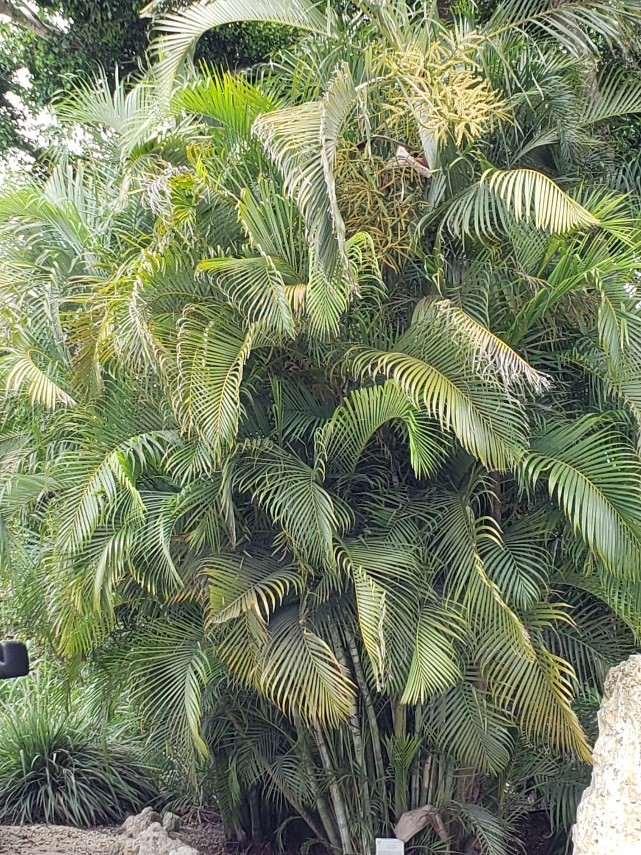The Areca Palm (Dypsis lutescens) is considered one of the most popular screening plant for privacy seen in the residential and commercial landscape. It is hard not to admire its soft, fine-textured fronds that are full and dense in appearance. Even though the Areca Palm is commonly used for privacy, it is also utilized as a great accent or backdrop in the landscape.
The Areca Palm is also known as the “Butterfly Palm”. It gets that name due to the fact that its multiple stems curve upward creating a butterfly look. The Areca Palm is adaptable and grows in the sun or partial shade. It is considered a moderate growing palm that can reach up to 20 feet tall. Therefore, it is important to make sure there is ample space for them to grow and in addition not to plant other plant varieties too close to the Areca. Areca Palms are commonly maintained without much trimming in order to maintain a full to the ground look. However, if planted as a specimen they can be thinned out to expose and accent the multiple trunks.
The Areca Palm is also sold as an indoor plant or for pool area in pots. Even though they can tolerate some shade it will thrive when there is direct sunlight. In general, the Areca Palm used as an indoor plant is short-lived and prefers to be planted outdoors. Many homeowners will transplant their Areca into their outdoor landscape in a suitable area to give it enough space to grow to its full potential.
It is important to fertilize them at regular intervals to keep them at optimum health and observed to address any issues that can arise if not properly maintained. Overall, the Areca Palm is a reliable as a privacy buffer plant as well as an accent palm and continues to be a favorite choice among landscapers and gardeners.
This plant column is a joint effort by all at In The Garden, Sanibel’s garden center, located at 3889 Sanibel Captiva Rd., Sanibel, Florida.
